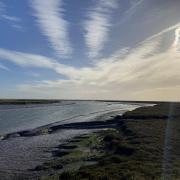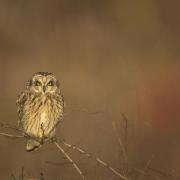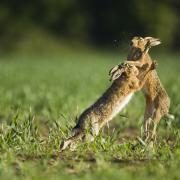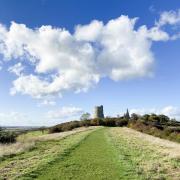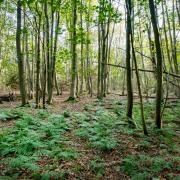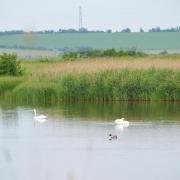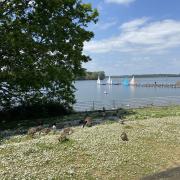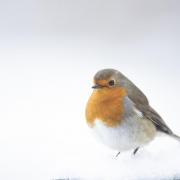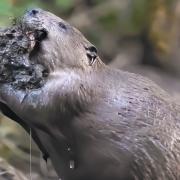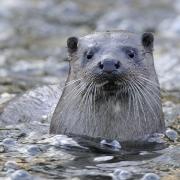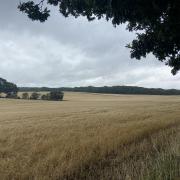Robert Pembroke shares his thoughts on the beauty of the Chase Nature Reserve in Dagenham and marvels at it’s transformation from the place he knew as a child
To me, the Chase in Dagenham has always been the gravel pit, where as a lad I went fishing. At that time, the rest of the area was wasteland, so it came as quite a surprise to me to hear that the area had been transformed from a rubbish-strewn area into a nature reserve.
I was inspired to make a visit and, alighting from our taxi, my son and I stood in a steady drizzle on a cold January morning.
As we began to explore our surroundings, the wet and cold were soon forgotten. It was startling to discover just how much had changed in the area. Who would have thought that beyond a sprawling Dagenham housing estate lay London’s biggest nature reserve?
Gravel from the pits at Eastbrook End contributed towards the building of the Becontree estate and the Ford motor works, among many other construction projects, and from the 1930s until the 1960s, the gravel pits were a hive of activity.
Once the work was finished, the area became no more than a large piece of waste ground, where people would dump all kinds of rubbish, but soon enough Mother Nature quietly went about her business. Among the waste, grass, plants and trees began to take over and the local council then decided to give nature a helping hand with the creation of the Chase Nature Reserve.
As we walked around the site, it seemed strange to think that most of the rubbish that used to litter the whole area was now buried beneath our feet — it’s amazing what you can do with a few bulldozers.
Hawthorn scrub is prolific at the Chase, which is well used during the winter months by birds such as the red wing and field fare. The hawthorn berries are part of the birds’ winter diet and many birds find hawthorn scrub excellent for nesting.
The chase is also home to a small population of nationally rare black poplar trees. With their characteristic, lean, down-turned branches and deeply grooved bark, these poplar were once a common sight on the forest flood plains of Britain. As few as 6,000 of these trees still remain nationwide and the great spotted woodpecker is just one of the birds taking advantage of these wooded areas at the Chase.
Although the gravely soil makes poor conditions for many plants, earthly hair grass and sheep’s sorrel are a few of the plants that thrive in these conditions. Birdsfoot trefoil is another plant that thrives in this soil and attracts, among other things, the common blue butterfly. The short grasslands are also perfect for insect feeding birds, notably meadow pipits and the pied wagtail, while during the late summer wheat eaters and yellow wagtails also pay a visit.
The River Rom flows through the reserve, until it meets the Ravenbourne where it becomes the River Beam, and along its banks water voles and kingfishers can be seen. There are several shallow pools dotted throughout the reserve, which at less than a meter deep can often dry out in the summer months. Teals and shovelers search for seeds and snails in the shallow waters, while snipes prefer to take worms from the muddy banks.
Terns and lapwings can also be found during the summer, drawn by the reserve’s largest body of water, the Slack. Later in the year, green sandpipers and red shanks love the muddy fringes during their autumn migration.
Frogs and newts thrive at the Chase too, and these in turn attract grass snakes who find them a great source of food. One of the largest lakes on the reserve is the Bardag. This belongs to the Bardag angling club, so only members are allowed to fish its waters.
The lake is home to many different plants such as yellow iris (also known as the yellow flag), which can be found in shallow water, while the bulrush, with its brown spike and strap like leaves, along with water mint and white water lily, can be found in and around these waters.
Standing motionless at the edge of the lake, the grey heron can also be seen, while moorhens enjoy the dense reeds and coots and great crested grebe live alongside one another. Some of the fish that populate this lake are the three spined stickleback, roach, carp and pike, while some of the smaller creatures include dragonflies, damselflies, pond skaters, water boatman, great diving beetles and leeches among others.
Anyone interested in wildlife and the environment would find the Chase Nature Reserve an ideal place to spend some time. The variety of species and undulating landscapes provide an excellent opportunity to get closer to nature while the Millennium Visitor Centre provides an educational exhibition on the history of the Chase and also a chance to relax and enjoy refreshments. n






